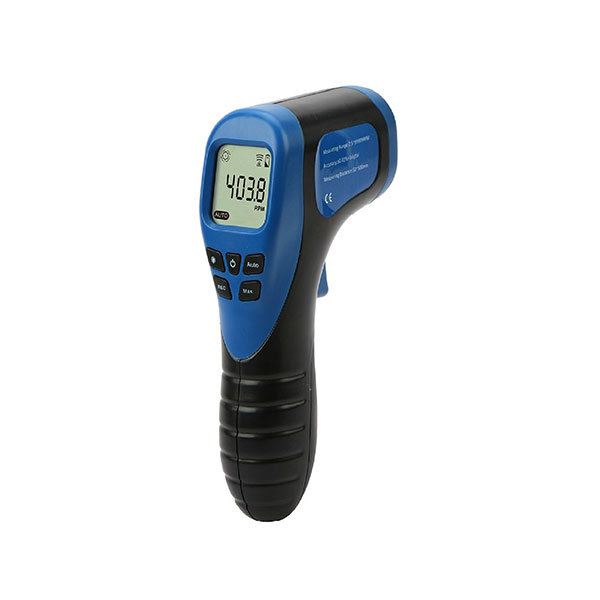How a Tachometer Aids Monitor Engine Wellness and Performance
How a Tachometer Aids Monitor Engine Wellness and Performance
Blog Article
Checking Out the Features and Benefits of a Tachometer: A Comprehensive Guide for Auto Fanatics
In the world of vehicle instrumentation, the tachometer stands as a necessary device that supplies drivers valuable insights right into their car's performance. tachometer. From supplying real-time data on engine speed to aiding in enhancing gear shifts, the tachometer works as greater than simply a dial on the control panel. Its multifaceted functions not only boost driving experience yet additionally play a crucial role in keeping engine health and wellness and performance. As we look into the intricate workings and advantages of a tachometer, a much deeper understanding of its value for auto fanatics and specialists alike will unfold.
Understanding the Essentials of a Tachometer
In the realm of auto instrumentation, recognizing the fundamentals of a tachometer is important for any auto lover wanting to dig right into the ins and outs of engine performance tracking. A tachometer, frequently presented on the dashboard of a lorry, determines the engine's revolutions per minute (RPM) This crucial tool offers real-time data on exactly how fast the engine crankshaft is turning. By keeping track of the RPM, vehicle drivers can ensure they are operating within the optimum range to make the most of efficiency and performance.
Tachometers usually have actually a scale noted in changes per minute, with a redline suggesting the optimum rate at which the engine can securely operate (tachometer). This info is crucial for preventing engine damage and enhancing equipment moving for manual transmissions. In addition, tachometers can help in detecting engine issues such as misfires or a failing ignition system by finding irregular RPM readings
Significance of Checking Engine Rate

Monitoring engine rate is an important element of vehicle maintenance and performance optimization for automotive fanatics and experts alike. The engine speed, gauged in transformations per min (RPM), suggests how fast the engine's crankshaft is revolving. By keeping a close eye on the RPM, drivers can ensure that the engine is operating within the optimum variety, preventing possible damage from over-revving or delaying. Keeping an eye on engine rate is especially critical during equipment shifts, as it assists vehicle drivers figure out the correct time to change gears for smooth acceleration and effective fuel usage.
In addition, tracking engine speed can likewise give important understandings into the general wellness of the car. Uncommon variations in RPM may suggest concerns such as a clogged up Check Out Your URL air filter, gas system problems, or perhaps engine misfires. By discovering these abnormalities early on with the tachometer analyses, drivers can address potential problems immediately, stopping extra severe damage and costly repair work down the line. On the whole, keeping track of engine speed with a tachometer is an essential method that can boost driving efficiency, lengthen engine life, and guarantee a much safer and a lot more satisfying driving experience.
Enhancing Efficiency With Gear Shifts
Proper equipment moving ensures that the engine runs within its optimal power band, permitting for smooth acceleration and boosted gas economic climate. When shifting gears, it is crucial to pay interest to the engine speed suggested on the tachometer.

To achieve peak performance with equipment shifts, chauffeurs must exercise smooth and prompt changes between gears, matching engine rate with roadway rate to harness the complete possibility of their vehicle's powertrain.
Optimizing Performance With a Tachometer
Grasping the art of equipment moving in high-performance automobiles not just improves driving experience however likewise plays an essential function in optimizing performance with a tachometer. tachometer. By paying very close attention to the tachometer analyses, vehicle drivers can maximize their equipment changes to run within the engine's most effective variety. When speeding up, moving gears at the ideal RPM suggested by the tachometer can protect against the engine from straining or underperforming, leading to boosted gas effectiveness and general performance
Additionally, a tachometer helps vehicle drivers stay clear of unnecessary revving, which not only wastes fuel yet likewise puts unneeded stress on the engine. Regularly keeping an eye on the tachometer while driving permits smoother gear transitions, lowering deterioration on the transmission system in time.

Advanced Tips for Tachometer Application
To dive into innovative ideas for tachometer usage, take into consideration incorporating the usage of change lights. Shift lights are aesthetic signs that illuminate when it's time to shift gears based on engine changes per min (RPM), permitting for smooth equipment changes without regularly monitoring the tachometer. By fine-tuning change factors and setting cautioning limits, motorists can enhance acceleration and engine efficiency while minimizing the risk of over-revving.
Verdict
In final thought, the tachometer acts as an essential tool for auto enthusiasts to keep track of engine rate, enhance efficiency via equipment changes, and optimize performance. By understanding the features and advantages of a tachometer, chauffeurs can enhance their driving experience and prolong the life expectancy of their car. Utilizing sophisticated pointers for tachometer use can better enhance driving abilities and overall performance on the road.
Report this page